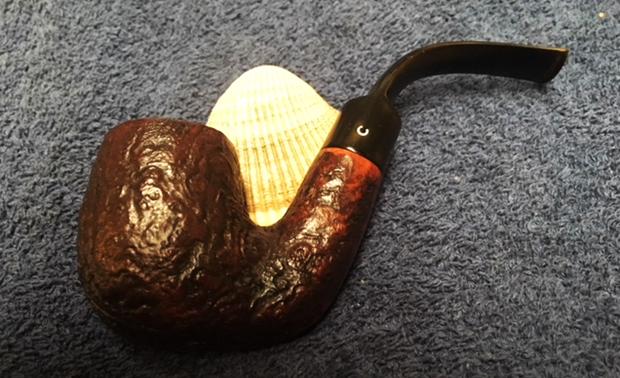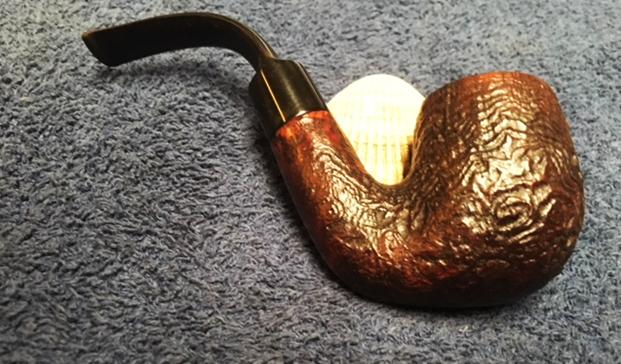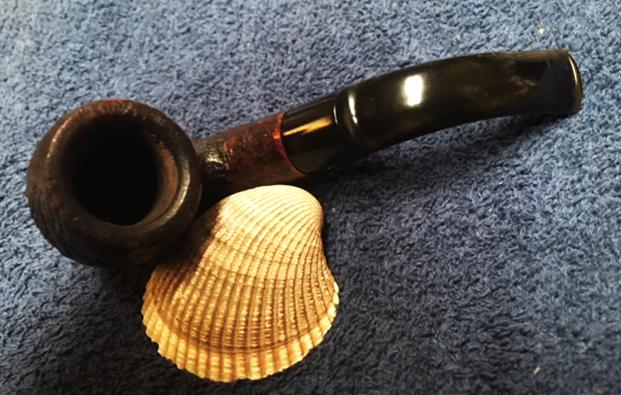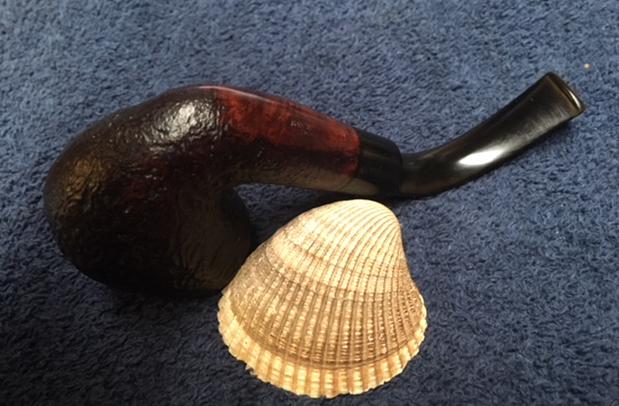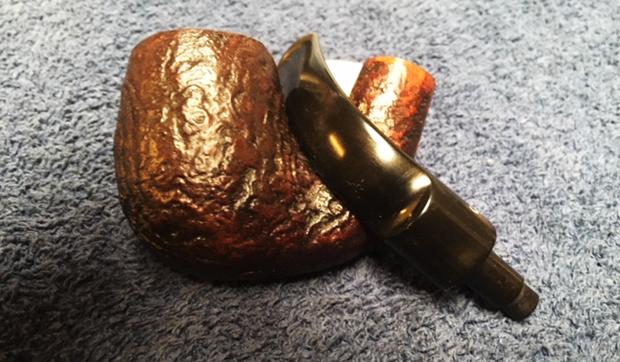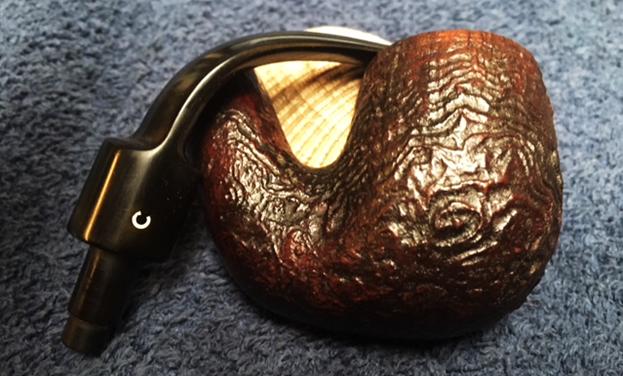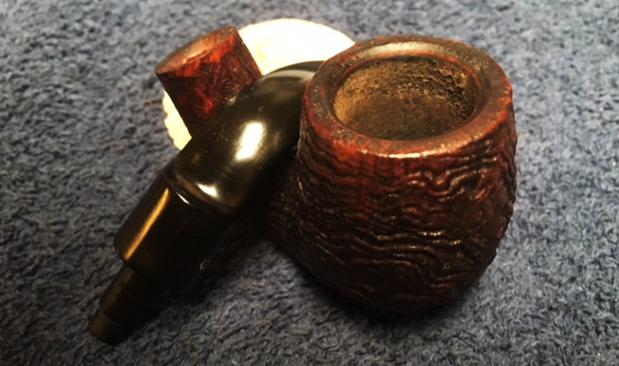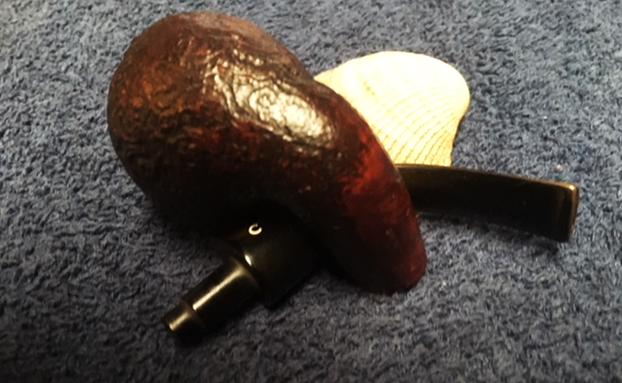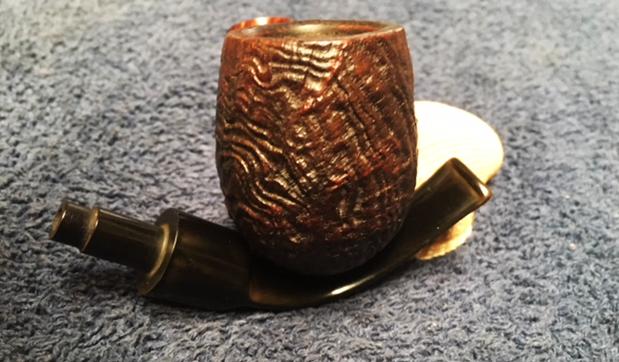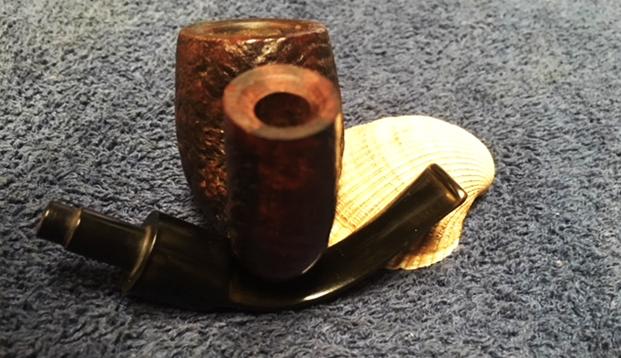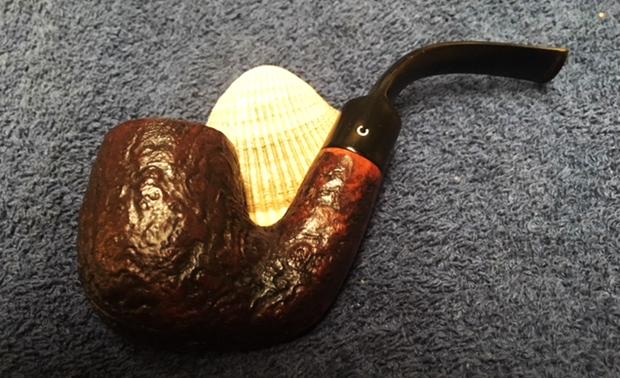Blog by Steve Laug
Recently I was contacted by a reader, Daniel about restoring a couple of pipes that he had picked up at a local antique shop. The first was a nice looking Art Deco style pipe with a prow and fins around the bowl. I wrote about the restoration of the C.B. Weber Streamliner already at this link: https://rebornpipes.com/2018/03/30/restoring-a-cb-weber-inc-maplewood-streamliner/. The second pipe was a briar Comoy’s Sandblast Bent Billiard that I worked on next. The bowl had a thick cake in it that had overflowed onto the rim top. There were shards of tobacco in the bottom of the bowl and on the sides as well. The finish was dirty but otherwise not too bad. There was a smooth band on the underside of the shank. It was stamped Comoy’s over Sandblast over Made in London over England and next to that was the shape number 215. The vulcanite stem was oxidized and there was tooth chatter on the top and underside at the button. The C logo was not the three part older logo that was on earlier Comoy’s pipe but rather a one part inlay with a different style font. I took photos of the pipe before I began the cleanup process.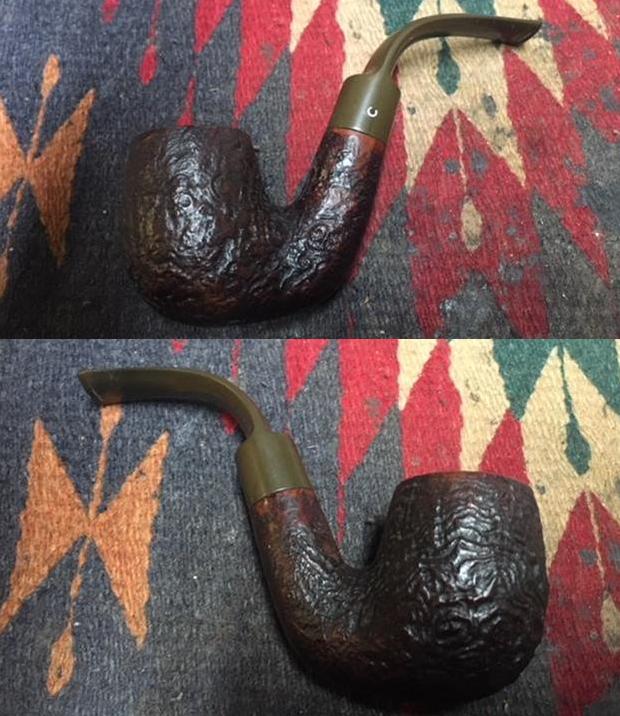
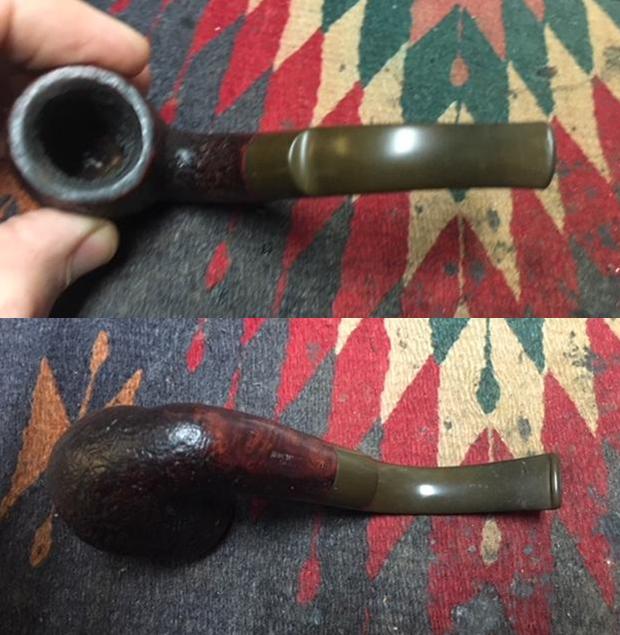 I took photos of the rim top and both sides of the stem to show the condition of both. The close up of the rim top shows the cake in the bowl and the overflow of lava in the grooves of the sandblast finish. The photo shows the tobacco debris stuck in bottom and on the sides of the bowl. The stem was oxidized and both sides of the stem had tooth chatter near the button. There were no deep tooth marks so it would be a fairly easy cleanup.
I took photos of the rim top and both sides of the stem to show the condition of both. The close up of the rim top shows the cake in the bowl and the overflow of lava in the grooves of the sandblast finish. The photo shows the tobacco debris stuck in bottom and on the sides of the bowl. The stem was oxidized and both sides of the stem had tooth chatter near the button. There were no deep tooth marks so it would be a fairly easy cleanup.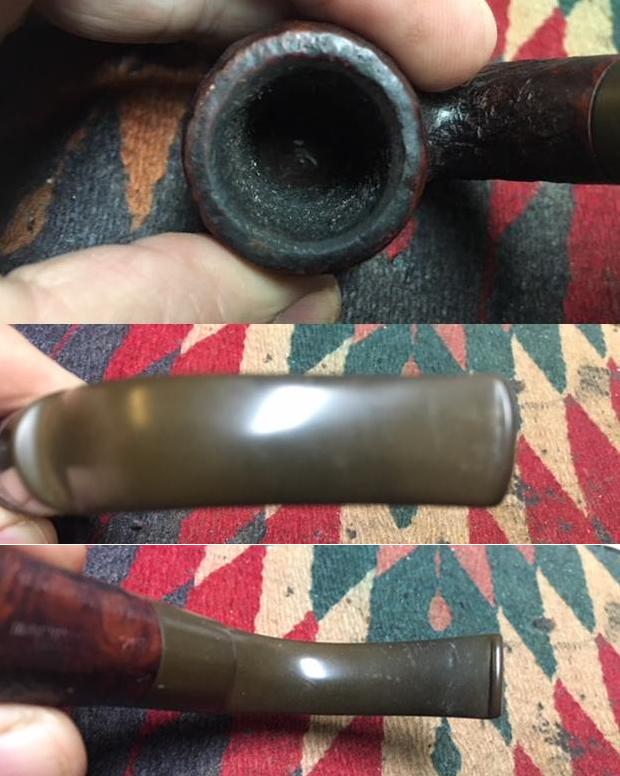 I took two photos of the underside of the shank rolling it between photos to make sure that all of the stamping was readable.
I took two photos of the underside of the shank rolling it between photos to make sure that all of the stamping was readable.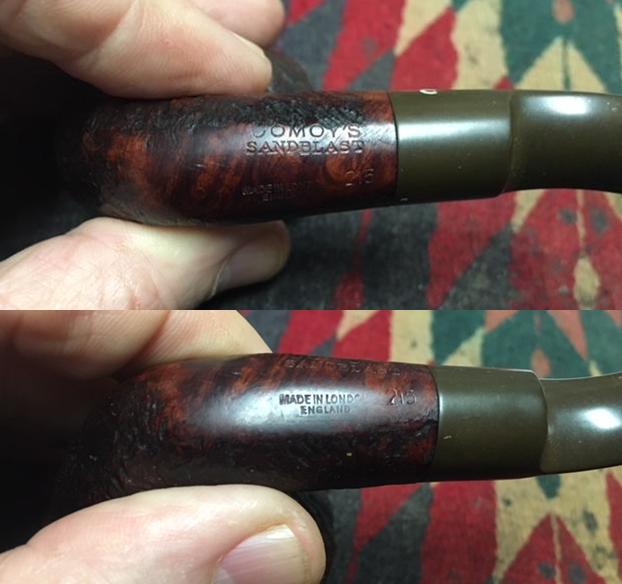 I reamed the bowl with a Savinelli Fitsall Pipe Knife to remove all of the cake and the tobacco debris that was stuck to the walls of the bowl. I scraped the cake back to bare briar so that I could examine the walls of the bowl. There were very clean and there was no checking or burn marks.
I reamed the bowl with a Savinelli Fitsall Pipe Knife to remove all of the cake and the tobacco debris that was stuck to the walls of the bowl. I scraped the cake back to bare briar so that I could examine the walls of the bowl. There were very clean and there was no checking or burn marks.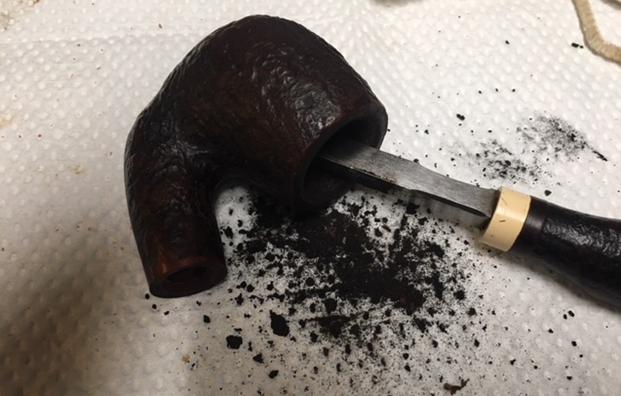 I cleaned out the interior of the pipe with pipe cleaners, cotton swabs and alcohol. It was not as dirty as I expected. I was able to remove all of the grime and tars that were in the mortise, shank and airway in the stem.
I cleaned out the interior of the pipe with pipe cleaners, cotton swabs and alcohol. It was not as dirty as I expected. I was able to remove all of the grime and tars that were in the mortise, shank and airway in the stem.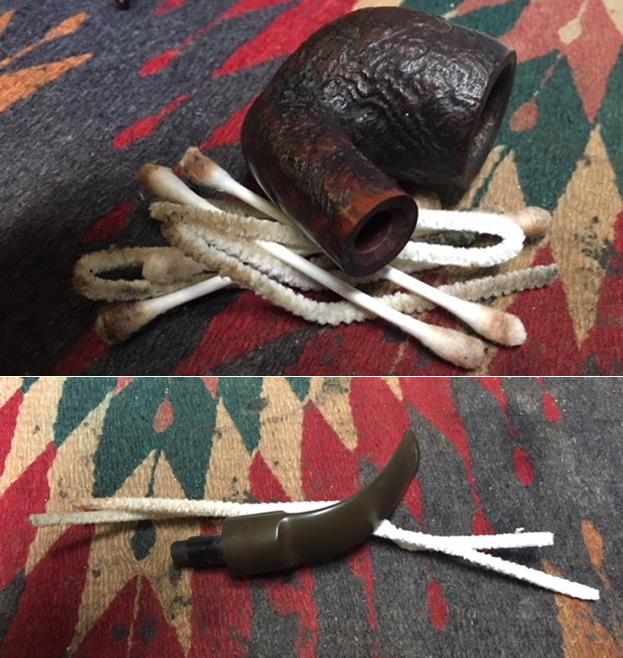 I used a brass bristle wire brush to clean up the rim top sandblast. I scrubbed it until the entire rim top was clean and the debris removed. I worked over the inside of the bowl with a folded piece of 220 grit sandpaper to clean up the edge.
I used a brass bristle wire brush to clean up the rim top sandblast. I scrubbed it until the entire rim top was clean and the debris removed. I worked over the inside of the bowl with a folded piece of 220 grit sandpaper to clean up the edge.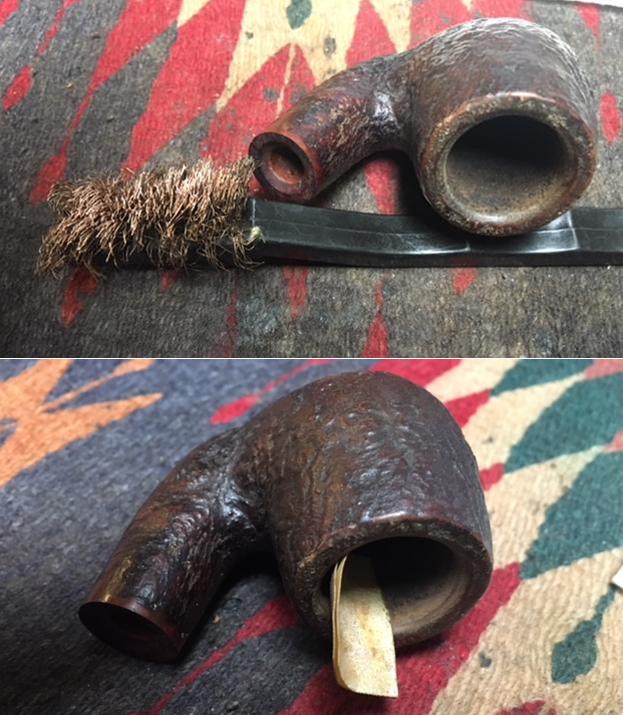 I scrubbed the surface of the briar with Before & After Restoration Balm, working it into the grooves and deeper areas of the sandblast. The balm enlivens, cleans and protects the briar was it is worked into the finish. I let it sit for a short time and then buffed it off with a soft cloth. I took photos of the bowl to show the condition at this point.
I scrubbed the surface of the briar with Before & After Restoration Balm, working it into the grooves and deeper areas of the sandblast. The balm enlivens, cleans and protects the briar was it is worked into the finish. I let it sit for a short time and then buffed it off with a soft cloth. I took photos of the bowl to show the condition at this point.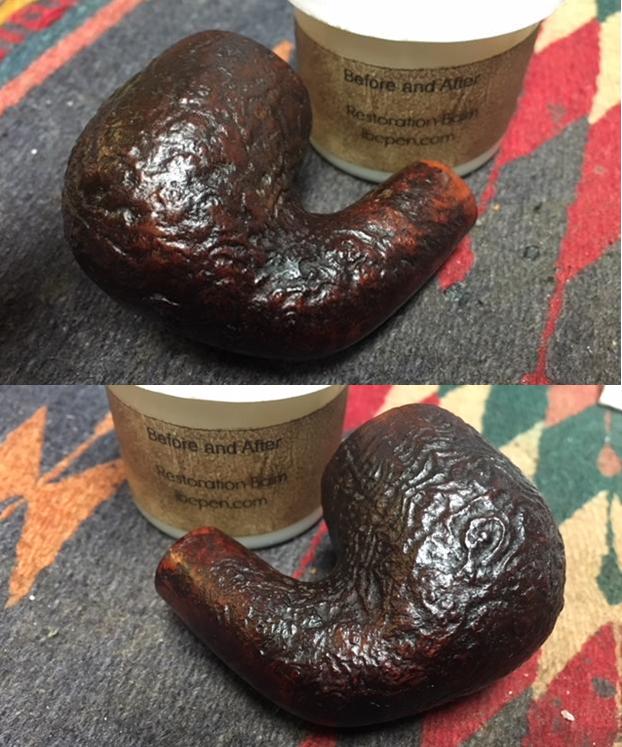
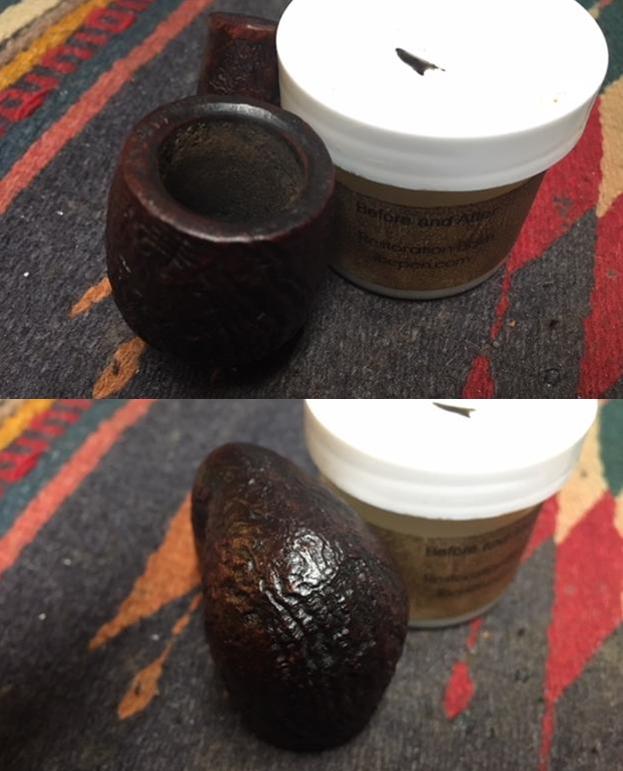 I wet sanded the stem with 400 grit wet dry sandpaper to smooth out the tooth marks and chatter. I worked on it until I had removed the majority of the oxidation on the surface.
I wet sanded the stem with 400 grit wet dry sandpaper to smooth out the tooth marks and chatter. I worked on it until I had removed the majority of the oxidation on the surface. 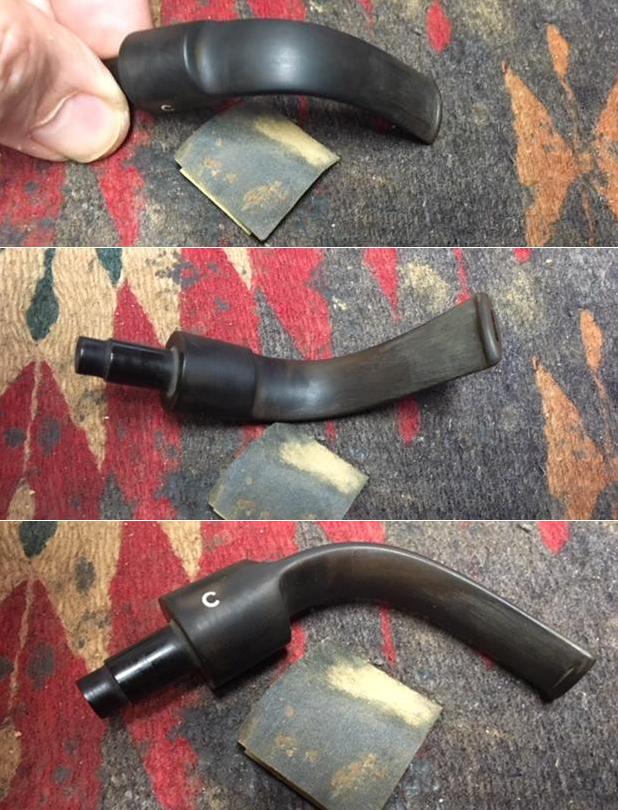 I polished the stem surface with micromesh sanding pads – wet sanding with 1500-2400 grit pads and dry sanding with 3200-12000 grit pads. I wiped it down with Obsidian Oil after each sanding pad. I further polished it with Before & After Pipe Stem Polish – both Fine and Extra Fine deepen the shine. I gave the pipe a final coat of Obsidian Oil and set it aside to dry.
I polished the stem surface with micromesh sanding pads – wet sanding with 1500-2400 grit pads and dry sanding with 3200-12000 grit pads. I wiped it down with Obsidian Oil after each sanding pad. I further polished it with Before & After Pipe Stem Polish – both Fine and Extra Fine deepen the shine. I gave the pipe a final coat of Obsidian Oil and set it aside to dry. 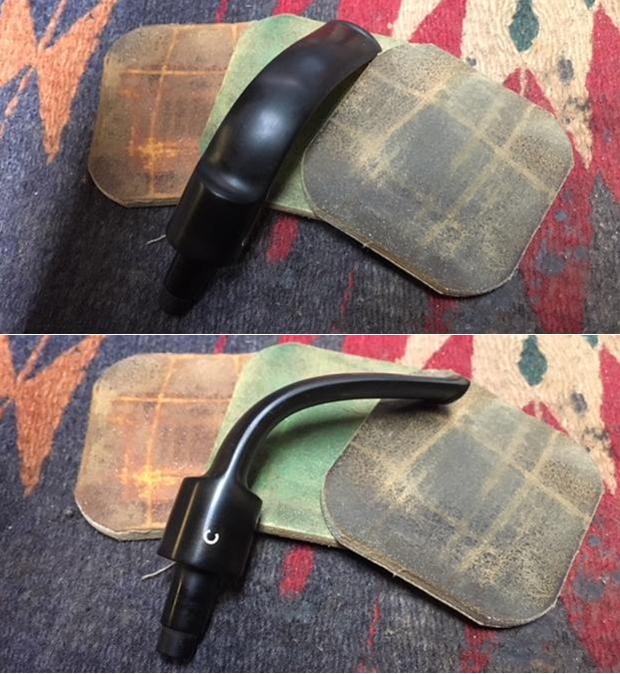
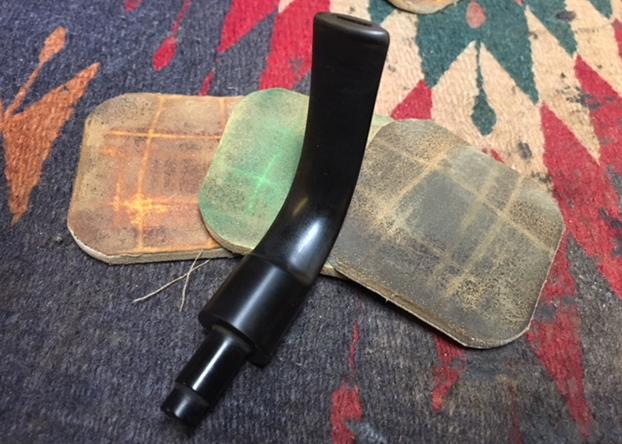
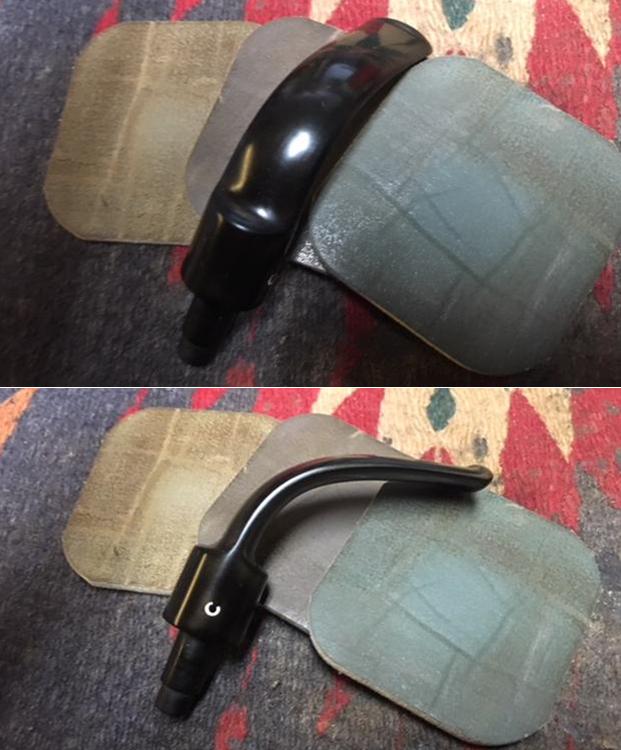
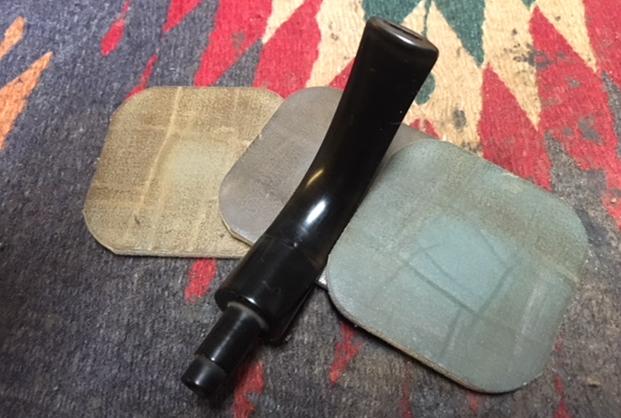
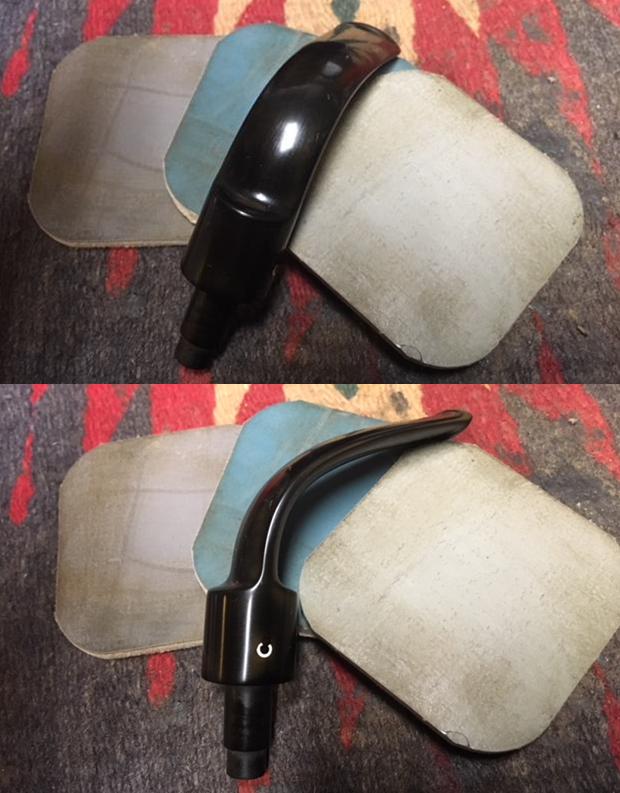
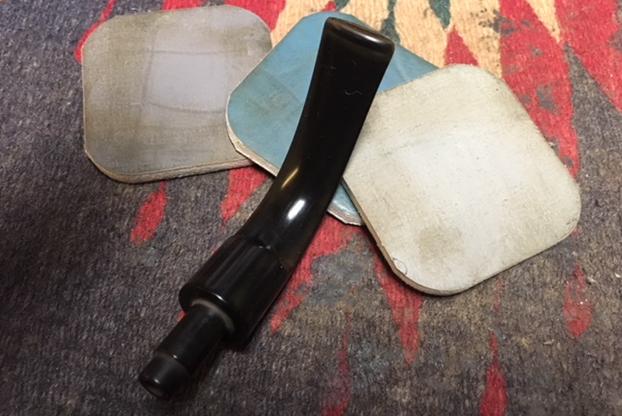
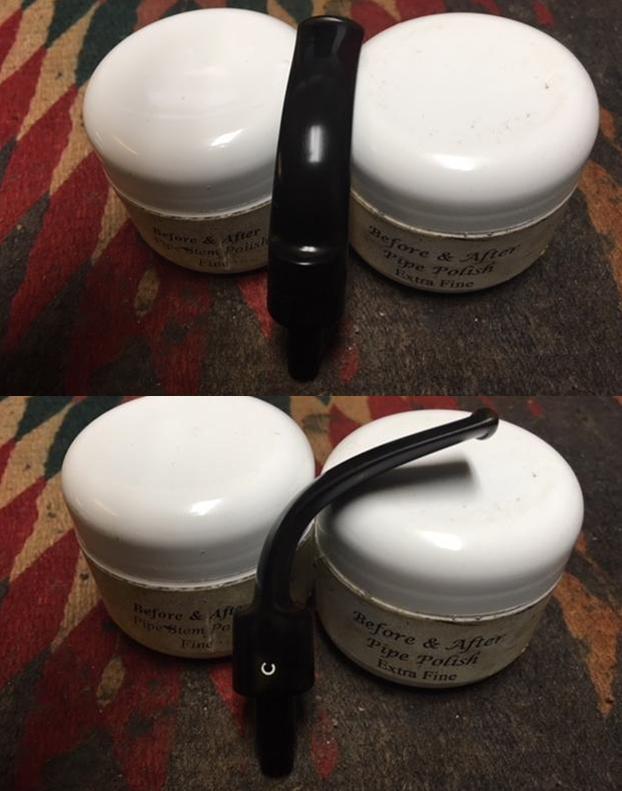
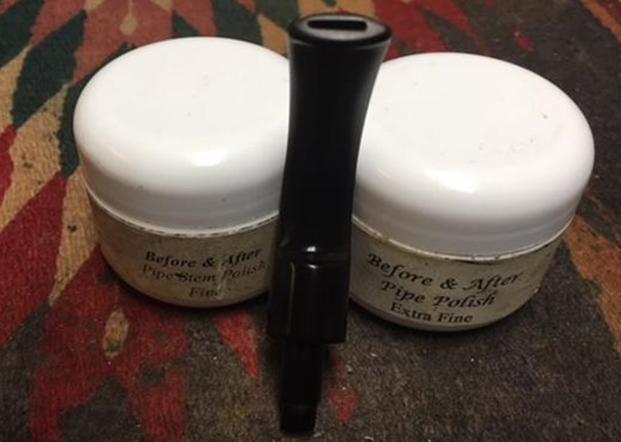 I put the stem back on the bowl and worked the pipe over on the buffing wheel using Blue Diamond to lightly polish both the bowl and the stem. I buffed the bowl and stem to raise the gloss on the briar and the vulcanite. I gave the bowl a lighter buff than I did on the stem to keep the polishing material from clogging the deep grooves of the blast. I gave the bowl multiple coats of Conservator’s Wax and gave the stem multiple coats of carnauba wax. I buffed the entire pipe with a clean buffing pad to raise the shine. I hand buffed it with a microfiber cloth to deepen the shine. The finished pipe is shown in the photos below. The contrasting brown stain – both medium and dark brown goes well with the rich black of the vulcanite stem. The dimensions of the pipe are: Length: 5 1/2 inches, Height: 1 3/4 inches, Outside Diameter: 1 1/4 inches, Diameter of the chamber: 3/4 inches. This is a newer Comoy’s pipe as far as can tell from the shape and fit of the C logo on the stem. Now that Daniel’s second pipe finished I will soon pack them up and mail both of them back to him. I know he is looking forward to loading it up and smoking it. Thanks for walking with me through the restoration.
I put the stem back on the bowl and worked the pipe over on the buffing wheel using Blue Diamond to lightly polish both the bowl and the stem. I buffed the bowl and stem to raise the gloss on the briar and the vulcanite. I gave the bowl a lighter buff than I did on the stem to keep the polishing material from clogging the deep grooves of the blast. I gave the bowl multiple coats of Conservator’s Wax and gave the stem multiple coats of carnauba wax. I buffed the entire pipe with a clean buffing pad to raise the shine. I hand buffed it with a microfiber cloth to deepen the shine. The finished pipe is shown in the photos below. The contrasting brown stain – both medium and dark brown goes well with the rich black of the vulcanite stem. The dimensions of the pipe are: Length: 5 1/2 inches, Height: 1 3/4 inches, Outside Diameter: 1 1/4 inches, Diameter of the chamber: 3/4 inches. This is a newer Comoy’s pipe as far as can tell from the shape and fit of the C logo on the stem. Now that Daniel’s second pipe finished I will soon pack them up and mail both of them back to him. I know he is looking forward to loading it up and smoking it. Thanks for walking with me through the restoration.